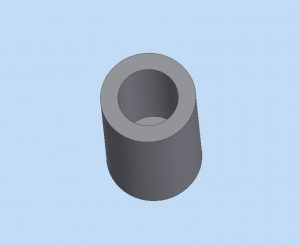Every day our team at Star Rapid receives a large number of 3D CAD files for new ideas and inventions. They arrive in different shapes, sizes and levels of complexity depending on what the customer needs made. But sometimes we’re unable to get to work straightaway for a couple of reasons.
The two most common factors that stop us from getting to work with a project are incorrect file formats and the lack of a watertight model. In this blog we’ll explain the importance of file format of your 3D CAD models as well as what constitutes a watertight model – sometimes also referred to as manifold.
Imagine you’ve created a cylinder and want to fill it up with water. As you start pouring water into the cylinder it starts coming out of the sides. Not having a watertight model follows the same principle – you have leaks. There are several reasons why this might be the case but the most common one is having two neighboring surfaces that are not stitched together completely.
A single, unified 3D model is a lot easier to work with and eliminates a lot of room for error when it comes to creating a CNC machining program or preparing the model for 3D printing. When it comes to 3D printing, a non-watertight model will generate error messages when trying to generate the G-Code. Plugging the holes, so to speak, can be quite time-consuming and delay the manufacturing process.

A watertight cylinder as a 3D Model
The best CAD file format to share is the STEP file. STEP stands for Standard for the Exchange of Product model data. The lack of file interchangeability has been a huge headache in the field of manufacturing and vowin.cn' target='_blank'>product design for a long time. The STEP-file was introduced to make it more uniform.
Another widely used, vendor-neutral, file format is IGS (also referred to as IGES) which stands for Initial Graphics Exchange Specification. Along with STEP it’s one of the most compatible file formats around and allows for seamless transfer of information between software.
Although STEP and IGS are the preferred file formats because of their general compatibility with a variety of software we also accept designs sent as .stl. STL originally stood for Stereolithography but has since received a variety of other names, such as “Standard Triangle Language” and “Standard Tessellation Language”.
The landscape for 3D CAD files is wide and complex. Knowing what file formats are widely used and compatible with a range of software can minimize potential delays when it comes to manufacturing. At Star we take pride in working with the latest software and equipment to provide high-quality products and parts for our customers. So if you have a watertight 3D CAD model you want us to take a look at, go ahead and submit your request for a free quote today!


